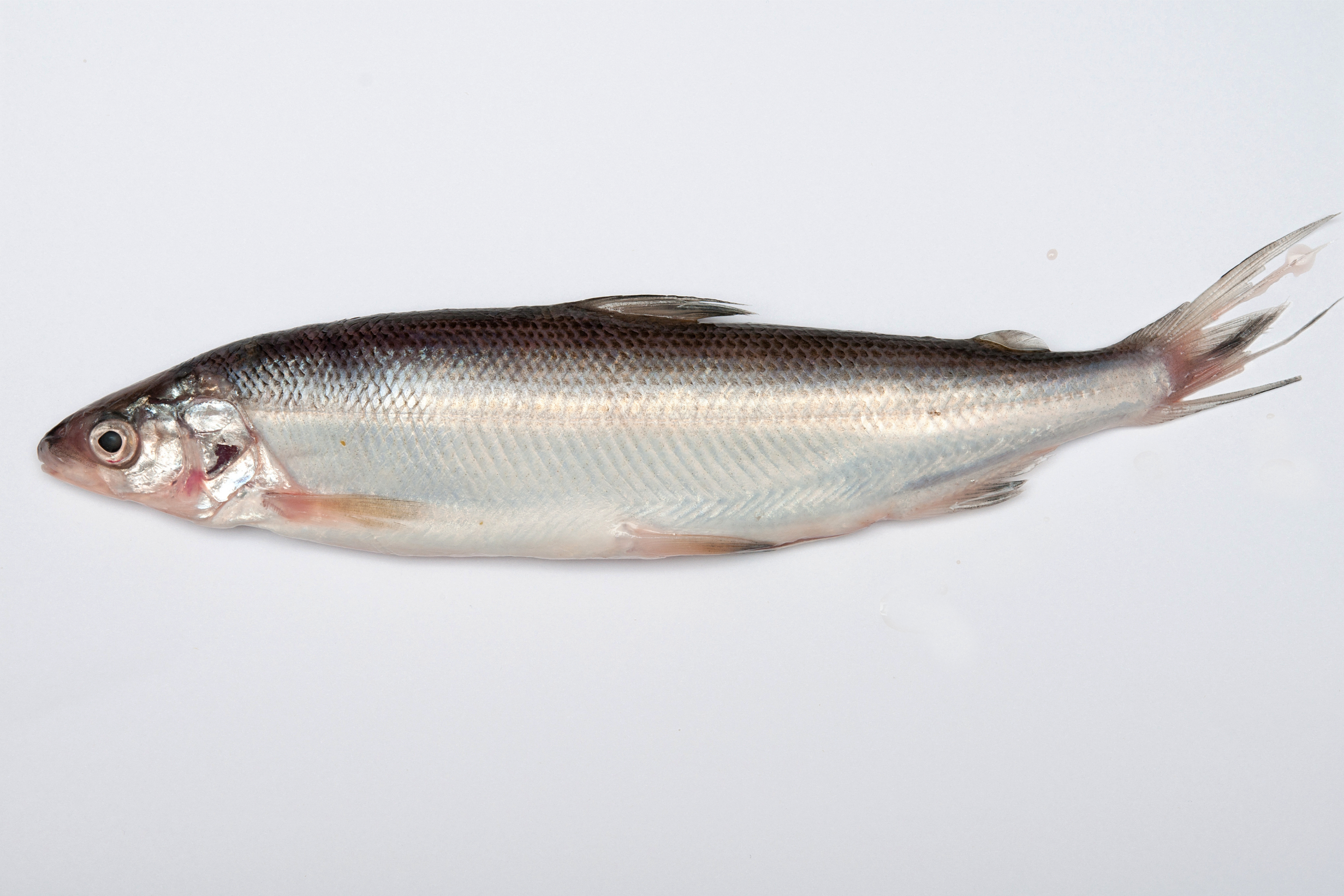Cisco
(Coregonus artedi)

Description
Coregonus artedi, commonly known as the cisco, is a North American species of freshwater whitefish in the family Salmonidae. The number of species and definition of species limits in North American ciscoes is a matter of debate. Accordingly, Coregonus artedi may refer either in a narrow sense to one of the several types of cisco found e.g. in the Great Lakes, or in a broad sense to the complex of all ciscoes in continental North American lakes, Coregonus artedi sensu lato. Narrowly defined, Coregonus artedi is known variously with the common names cisco, northern cisco, lake herring, chub or tullibee and its Anishinaabe name Odoonibiins. It is a pelagic fish occurring in the midwater zone of cold water lakes in North America. In the northern and western parts of its range it is also found in large rivers. This species occasionally grows as large as 40 cm and 2.3 kg (five pounds), but is more commonly 28 to 38 cm long and 170 to 907 grams (six ounces to two pounds) in weight. It is slender-bodied and silvery with pinkish iridescence on its sides. Diet is predominantly zooplankton and insect larvae, although fish eggs and larvae, including those of their own species are also documented. Small fish, including some minnow species, are also known to be consumed at times. Northern cisco are preyed upon by a wide variety of predatory species, and have a particularly important place in the diet of lake trout (Salvelinus namaycush). It is also a common food of rainbow trout (Oncorhynchus mykiss), northern pike (Esox lucius), burbot (Lota lota), yellow perch, (Perca flavescens) and walleye (Sander vitreum) where the species overlap ranges. The abundance of northern cisco in the North American Great Lakes is much reduced from the levels of the 19th Century. Once abundant in all five lakes, it is now common only in Lake Superior. The Lake Huron population has been increasing recently, perhaps as a consequence of low alewife (Alosa pseudoharengus) abundance. Limited numbers have also reappeared in Lake Michigan's lower Green Bay. Numbers in Lakes Erie and Ontario remain far below historical levels. The reduced abundance is believed to result from the cumulative effects of several factors, including the expansion of non-native species such as alewife, rainbow smelt (Osmerus mordax) and sea lamprey (Petromyzon marinus). These species prey on and compete with various life stages of northern cisco.
Taxonomic tree:







